Architecture that inspires
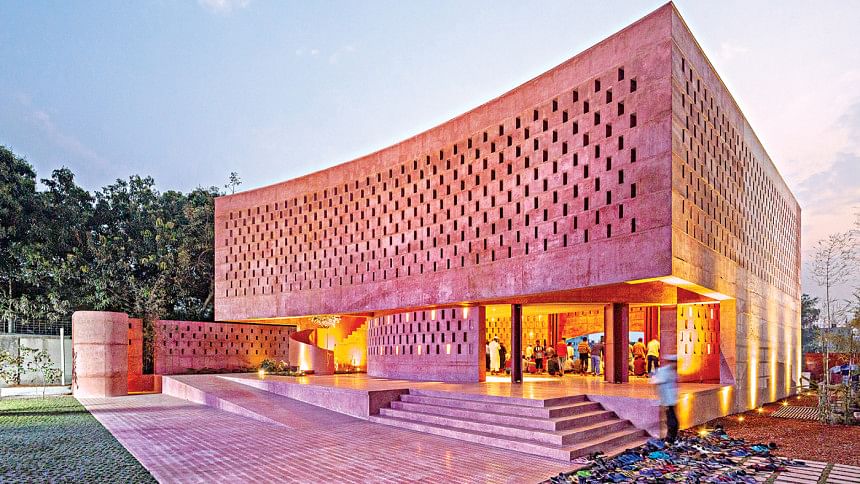
The contemporary architectural scene in Bangladesh is going through an exciting time. In an era when design styles seem to travel faster than light, and certain trends set the standards — Bangladeshi buildings are blending global styles with the local features, rooted in our vibrant culture and climate.
Bangladesh's palette of architectural works is surely diverse, and many of them are being celebrated worldwide. Numerous works have also received international recognition. What is more admirable is the growing interest of young architects in community-led architecture — rethinking shelters in marginalised areas of the country.
But how is modern architecture evolving towards innovative solutions to enhance our lifestyles? Do we need traditional Bengali wisdom in this modern era? To get an in-depth understanding, we spoke to some notable architects of our time, and understand their insights into the inspiring landmarks they designed!
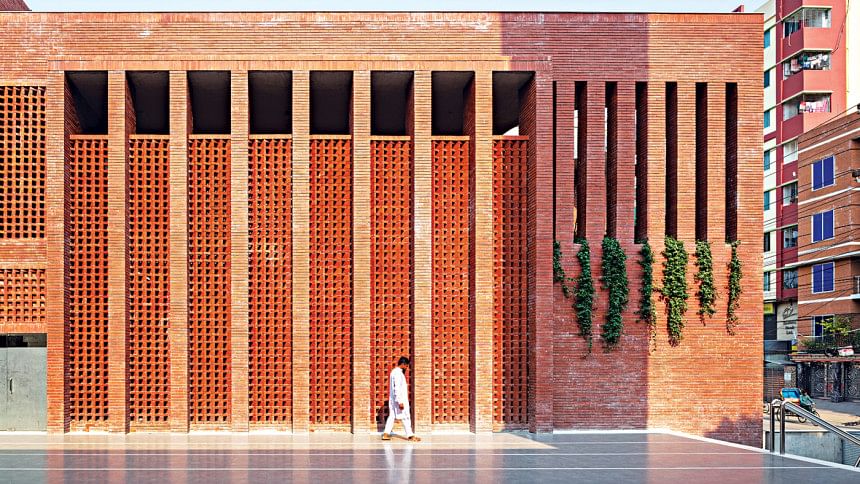
Old town, new mosque
"At the beginning of my design process, I ask myself, where am I standing?" shares Prof Rafiq Azam, principal architect of SHATOTTO Architecture for Green Living. The pioneering architect shares that a meaningful building is largely shaped by its place and people.
One of his remarkable works; Mayor Mohammad Hanif Jame Mosque has won the Eurasian Prize 2020 in the architecture category. In this project, he takes a bold step towards redefining the classical image of a mosque by embracing contemporary features.
Upon entering the complex, devotees are welcomed with a scenic roofless terrace, with a view towards the Azimpur Graveyard. People come here, sit down, sometimes chat with their neighbours, or take some rest during the non-praying hours. On Friday afternoons, the place fills with people gathering for the Jummah prayer.
"The terrace is inspired by the Mughal concept of 'Shaan," describes Azam. "In this bustling neighbourhood, the shaan serves as a social hub and a much-needed respite," he elaborates.
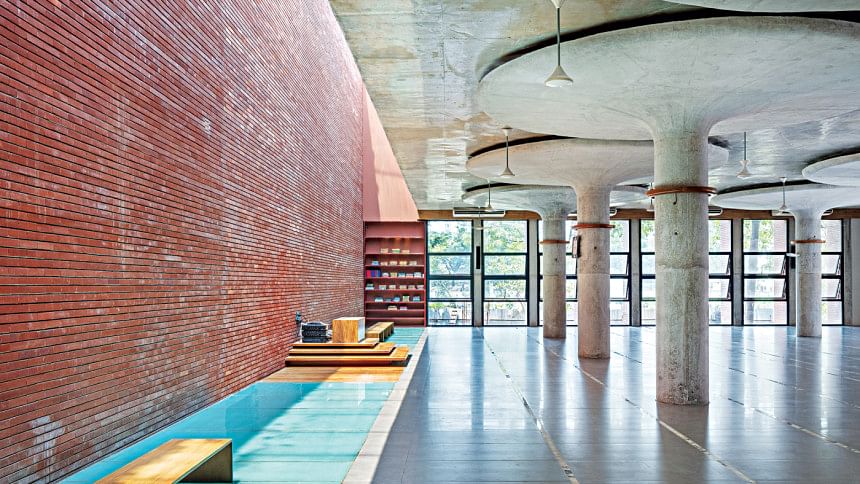
Dhaka, also famous as 'The City of Mosques' — brims with places of worship. Yet, rarely do we see one with no domes, archways, or 'minarets,' especially in an old town where Mughal mosques stand proud.
Azam says that he had involved the community and the clientele in the design conversation, and soon, people were eager to have a new mosque in their area.
In answering what drove him to discard these details, the veteran architect responded rather thoughtfully, "I think the absence of symbols can actually bring us closer to God."
Breaking away from decorative traits, Azam wished to evoke spirituality with natural and subtle attributes. For example, the male prayer hall omits a traditional praying spot (mihrab) of the religious leader (Imam). Instead, the Imam's prayer space is highlighted by light from the ceiling and glass accents on the floor, creating a peaceful ambience.
The female prayer space has a dramatic opening on the roof, letting light flow inside. Imagine saying a prayer in such a divine setting, where sunshine flickers through pierced walls, as the graveyard lying a few steps away reminds you of the ultimate fate.
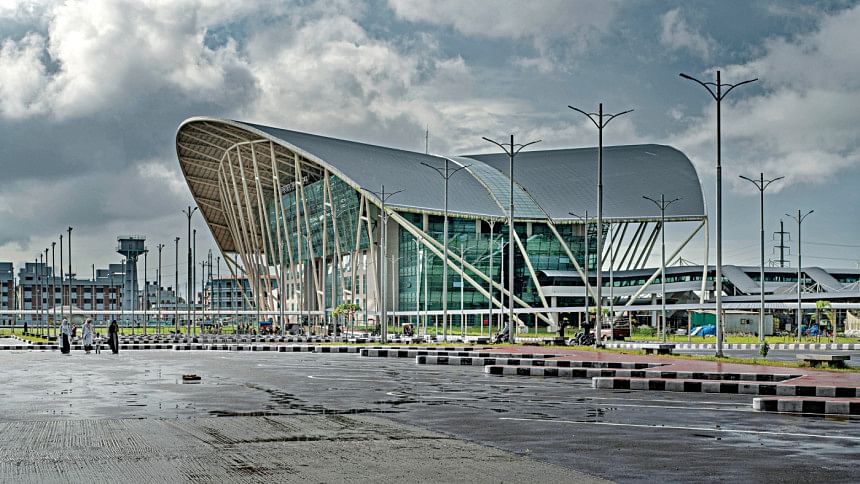
The soaring tower at the front of the mosque and a chic glass bridge with engraved Qur'anic verses define the aesthetics of a present-day praying space. Azam shares with content how the local people take care of the landmark, fostering a sense of community in the neighbourhood.
Towards a sustainable skyline
Beyond religious spaces, the megacity of Dhaka is seeing rapid growth in commercial structures. In the bustling boulevards of the capital, we can see a range of sleek towers, reflecting this swift transformation.
Take Shanta Forum as an example. The 25-storey twin tower at Tejgaon exhibits an expansive 'urban plaza,' while heat-resistant towers overlook the Hatirhjeel Lake. Like Forum, many cutting-edge high-rises are shaking up the city skyline, with exciting skyscrapers underway!
"The city is inevitably evolving towards high-rise buildings," observes Mohammad Foyez Ullah, the principal architect of Volumezero Limited with over 30 years of experience in the field. "And managing the density is an opportunity for architects to innovate," remarks the architect.
His portfolio has myriad milestone projects, like International Convention City Bashundhara (ICCB), Grameenphone Corporate Headquarters (GP House, designed in partnership with Mustapha Khalid Palash), Shahjalal Islami Bank CHQ, and many more.

In his work, he explores how buildings can interact with the city while enhancing the quality of a fast-paced lifestyle. But do these ambitious buildings increase the construction cost? Foyez Ullah emphasises that smart engineering and technology can in fact help cut down the budget. Furthermore, he adds that strategic planning can go a long way in dealing with our harsh tropical climate.
We can spot a notable example of Foyez Ullah's vision for the city in Banani's Simpletree Lighthouse. Despite the compact plot of only around 14 katha, Lighthouse smoothly harmonises with the thriving streetscape. The muted colour palette and textured concrete of the 15-storied development sets a serene tone amidst the corporate backdrop.
The luminous interiors of the Lighthouse are a result of a calculated floor plan, "We try to arrive at an efficient floor plate width to ensure light reaches into the interior," clarifies Foyez Ullah. "The interplay of glass and concrete layers creates a deep shade from the sun while elevating the aesthetics," he remarks.
The rhythmic terraces are cosy with flowers and plants, offering an exquisite view of the cityscape. He stresses how architecture can play a role in creating a healthy, comfortable and refreshing work environment in our race with time.
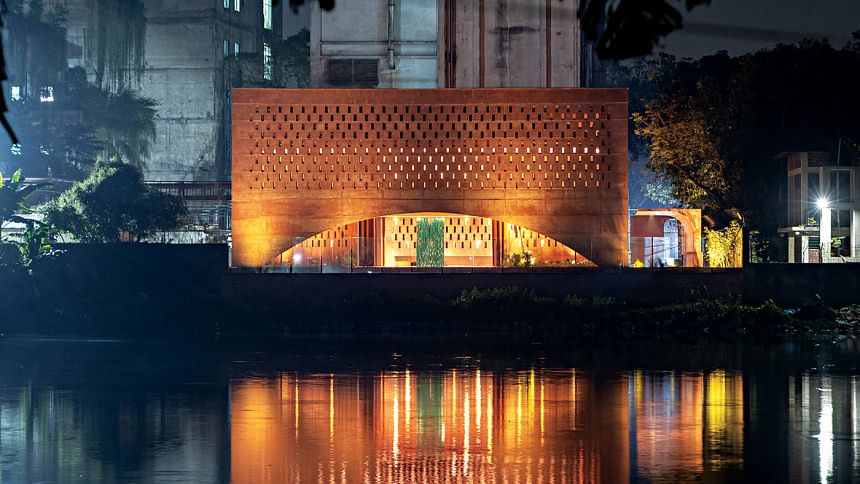
The iconic building embraces a sustainable construction approach, earning LEED Gold certification from The U.S. Green Building Council. In recent times, buildings like Simpletree Anarkali, CEGIS Bhaban, and GP House, along with many others, incorporate green materials, rainwater harvesting and water recycling systems — inspiring a bold new step towards sustainable architecture.
Modern spaces with a traditional twist
As modern architecture embraces innovation, the Zebun Nessa Mosque, designed by Studio Morphogenesis Limited, sets a stunning example of how modernity and tradition can co-exist and complement each other.
"On the one hand, the main hall of the mosque serves as a well-being space, echoing modern values," describes lead architect Saiqa Iqbal Meghna, co-founder of Studio Morphogenesis Limited. "The perforated walls, garden courts, and a thin-shell dome on the other, bring back age-old aesthetics of Bengal in keeping the room naturally cool," continues Meghna, also an Assistant Professor of the Department of Architecture at BRAC University.
The mosque has recently been awarded a place on the architecture shortlist of the top five civic projects from around the world for the Dezeen Awards 2024.
The prayer space has multiple uses — it holds discussions and prayer sessions where children from the nearby madrassa attend.
Meghna recalls, as an architecture student, she was once denied entry during a mosque survey. "The women's gallery in Zebun Nessa Mosque ensures the democracy of a space, where everyone can enter without hesitation," she shares with pleasure.
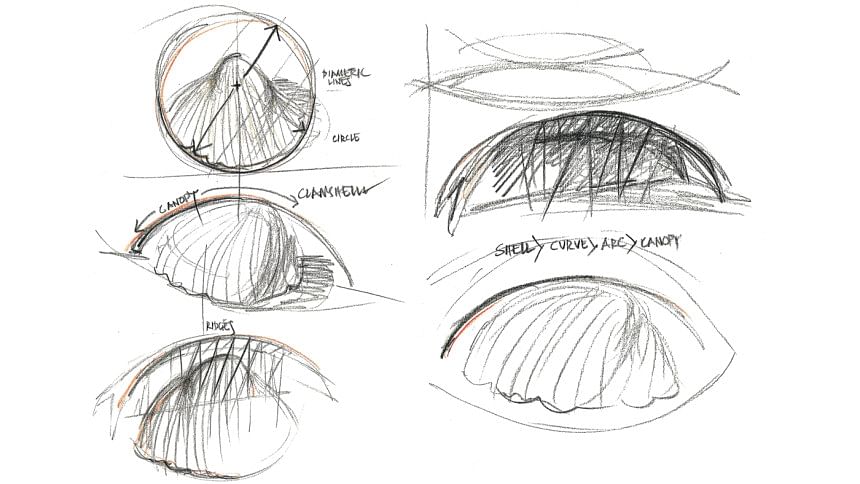
One of the noteworthy features of the mosque is its unique connection with nature that establishes the very idea of a "breathing pavilion" built over an elevated mound adjacent to low land and waterbodies, an indigenous architecture form of the monsoon delta.
The mosque marks its profound presence, deeply integrating the existing waterbody, a reminiscence of Ashulia's original landscape. According to Meghna, the client wanted to integrate the serenity of the nearby waterbody into the lifeless industrial zone.
"As a response, we partly chiselled away the westward boundary wall — revealing the view. Unlike solid qibla walls in conventional mosques, the qibla of this mosque is defined by a wide arched opening, allowing the prayer space to flow seamlessly towards a light-filled infinity," she adds.
Saiqa Iqbal Meghna stresses how modern architecture allows architects to settle for a simpler and more efficient approach. The ethos is evident in many architectural benchmarks, including the Bait Ur Rouf Jame Mosque by Marina Tabassum, which received the prestigious Aga Khan Award for its masterful geometry with the essence of Sultanate features.
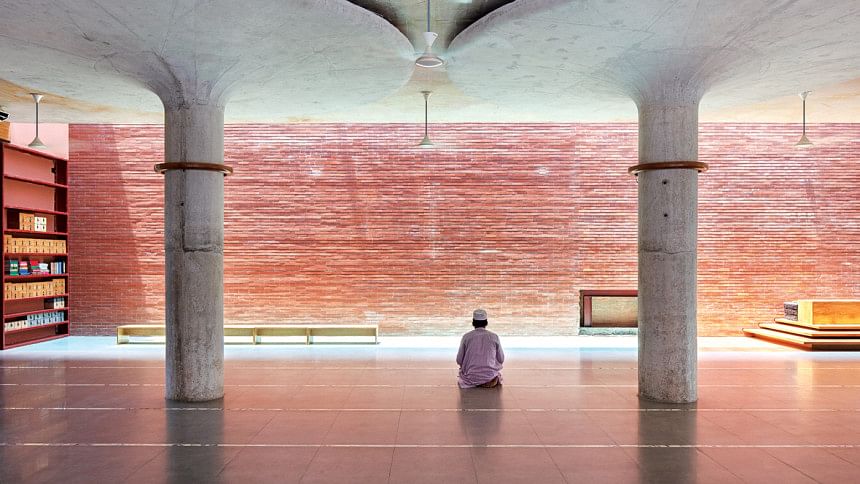
A homegrown masterpiece
Back in 2023, when the Cox's Bazar Railway Station opened to the public, many were amazed at the spectacular architectural grandeur. According to Foyez Ullah, the principal architect of the project, it was a challenge to make the project possible with the resources available in our country.
"We wanted to explore our capabilities," he remarks, with an enthusiasm to push the boundaries. "Translating the clamshell shape into a practical design was surely a challenge, and we overcame it."
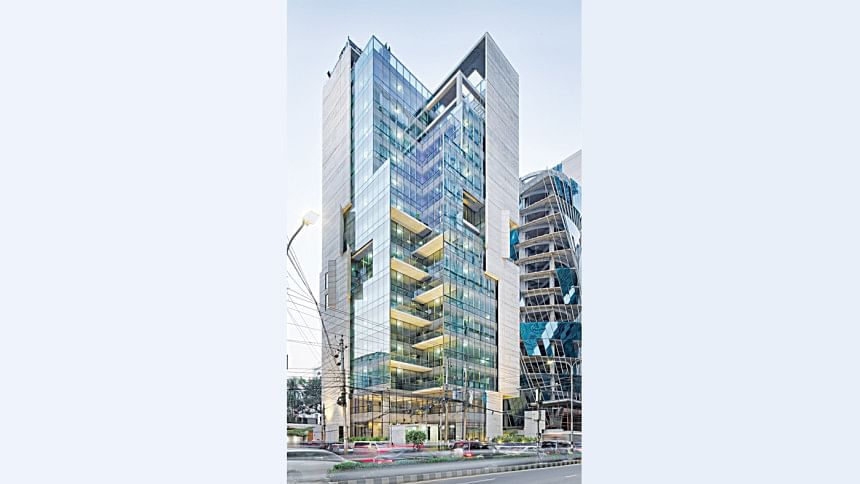
As one of the most iconic stations in the country, the unique roof represents the rich marine life of the sea, captivating locals and visitors alike. The station offers a grand welcome to tourists arriving to the beach city, where shops, experience zones, restaurants, and guest accommodations aim to transform it into a vibrant entertainment district.
This marvel surely does make you wonder — how much our construction and design sector can contribute with the right kind of support and system! As our architectural field evolves and inspires, embracing innovation, and tradition — Bangladesh also looks forward, towards building a robust architectural identity on the global platform.
Photo: Courtesy

 For all latest news, follow The Daily Star's Google News channel.
For all latest news, follow The Daily Star's Google News channel. 



Comments